How to Build an IoT Application: The Way to Success
Published: November 27, 2023
34 min read
In this article, you'll learn:
1
🗂️ Industries With High Demand for IoT Applications
2
✅ Top Things to Pay Attention to When Developing a Software for Your IoT Device
3
🕳️ Potential Pitfalls & How to Avoid Them
4
☁️ Platforms to Use for IoT Development
5
⚙️ Top Functionality of an IoT Software
6
🤖 How to Integrate an IoT with Third-Party Devices like Google Home & Alexa?
7
💰 What Affects IoT Application Development Costs?
8
👨💻 Our Expertise in IoT App Development
9
💡 Takeaways
In the era of digitization, many aspects of people’s lives are being significantly improved by remotely controllable devices & whole infrastructures — the so-called Internet of Things.
This industry is continually growing & bringing new products: a nearly $250B market is starting to surge and is projected to have grown by no less than 5 times by 2027.
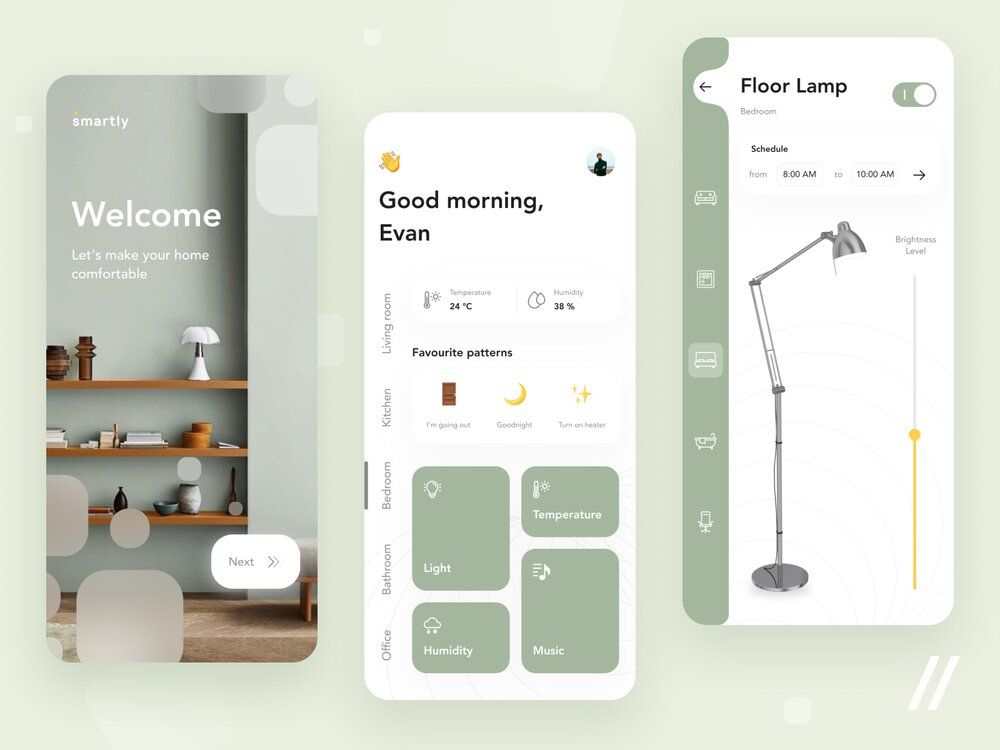
IoT app development is necessary for many companies to enable remote control (image by Purrweb UI)
Not only “things” get improved but software for their remote control gets diversified as well. In the realm of IoT application development, today's technology allows for customization to specific devices and applications, ranging from smart home solutions to extensive dashboards for larger-scale systems like medical appliances in hospitals and smart agricultural equipment.
If you’d like to learn more about this case or about IoT in the fitness industry, feel free to follow the link at the bottom of this section.
🗂️ Industries With High Demand for IoT Applications
The Internet of Things has permeated various sectors, revolutionizing how we interact with technology and each other. Here's a closer look at the industries where IoT applications are in high demand.
Use Cases in Healthcare
Smart devices have unlocked a new realm for patients' safety and health, equipping doctors to provide superior care, highlighting the significance of app development for healthcare, particularly in building tailored IoT applications. The deployment of diverse hardware such as wearables, sensors, and scales has facilitated meticulous monitoring, granting doctors the lead time to implement preventive measures and render accurate diagnoses.
Examples of IoT Apps in Healthcare
Smartwatches, a prominent example of IoT in the fitness industry, such as the Apple Watch, have capabilities to monitor heart rates continuously. This feature is not just for fitness tracking; it has the potential to detect heart conditions and prevent heart attacks by monitoring for signs like blood clot formation. In addition, Apple has introduced an API for its watches that focuses on monitoring Parkinson’s disease. This technology facilitates the automatic tracking of symptoms such as tremors and dyskinesia, which traditionally required diagnostic tests and symptom diaries under a physician's supervision.
CenTrak's RTLS aims to enhance the healthcare environment by providing precise location data and analytics. This system helps healthcare organizations improve the overall patient experience, optimize the workflow of medical staff, and manage the use and availability of medical equipment effectively.
Use Cases in Logistics
t's not just about tracking objects - real-time data collection and transfer capabilities revolutionize asset transportation, underscoring the importance of learning how to make an IoT app for efficient logistics management. IoT applications can remotely manage transport elements, optimizing energy use and enhancing customer experiences by minimizing wait times.
Examples of IoT Apps in Logistics
In the realm of internet of things application development, solutions like Zubie serve the logistics industry by providing a comprehensive fleet management solution. The primary goal of Zubie is to enhance the efficiency of business operations by offering robust vehicle tracking, maintenance alerts, and driver safety insights.
DHL has integrated advanced technologies into its trucks to improve efficiency, service quality, and real-time tracking capabilities. This includes the use of sensors and connected devices that monitor various aspects of the delivery process, such as vehicle location, temperature control for sensitive shipments, and optimal routing to reduce transit times and fuel consumption.
Use Cases in Automotive
The term "Automotive IoT" encapsulates the fusion of IoT components within vehicles, transforming them into hubs of connectivity and intelligence. This encompasses everything from car connectivity and predictive maintenance to comprehensive fleet management.
Examples of IoT Apps in Automotive
Tesla mobile application allows Tesla owners to remotely monitor and control various aspects of their vehicles, such as checking the charge level, starting the car, pre-conditioning the temperature, and locating the vehicle. Among similar applications: BMW ConnectedDrive, FordPass, Volvo Cars app, myAudi.
ChargePoint it's an app for electric vehicle users that provides access to a network of charging stations, allowing users to find available stations, start charging sessions, and track usage.
Use Cases in Smart Homes
Home automation through IoT-enabled devices and systems allows homeowners to command their domestic appliances with ease. This extends from intricate heating and lighting systems to remote-controlled security measures. By harnessing the power of IoT, homeowners gain control over their living spaces, enabling them to conserve resources and reduce expenses by closely monitoring and managing energy and water usage.
Examples of IoT Apps in Smart Homes
In smart home app development, systems like Philips Hue exemplify how users can control light settings, color, and intensity remotely via a mobile app, integrating with other smart home devices for automated routines.
Google Nest offers various options for Ayoti devices for your home: speakers, smoke & CO alarms, door locks, cameras, doorbells, and thermostats.
The demand for expertise in IoT application building is surging across diverse industries, each harnessing the power of connected technology to revolutionize their operations. As such, industries adopting IoT solutions are well-positioned to lead in innovation and service delivery, setting new standards for technological integration and user experience.
✅ Top Things to Pay Attention to When Developing a Software for Your IoT Device
The process of IoT app development, including companion app development, can be quite challenging in terms of technological nuances. Yet, to avoid potential pitfalls and make the process to create an IoT app smoother and easier, we recommend paying attention to a few specifics. Here they are!
Firmware
Firmware is a software program that’s “responsible” for communication between hardware systems:
- Hardware Boards.
- Edge Computing.
- Sensors.
It can be developed using different languages from C to Python. We at Stormotion work with multiple programming languages such as React, React Native, Java/Kotlin, etc.
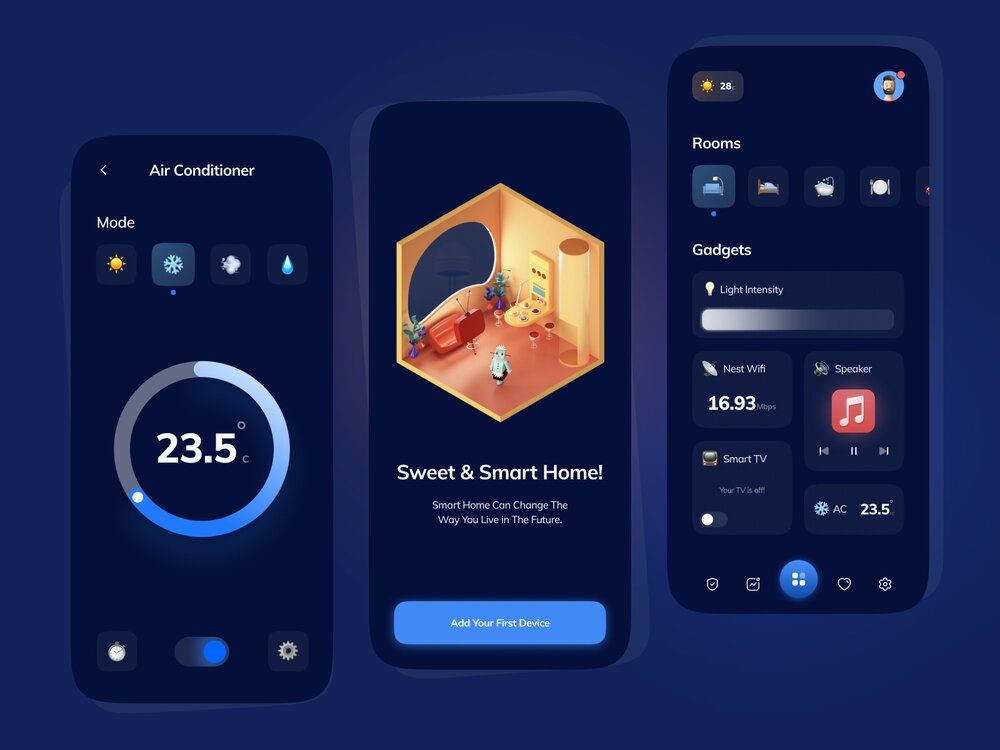
Firmware is an important part when you aim to make IoT applications for smart devices(image by S.Mostafa Esmaeili)
So, depending on your use case, a certain language might suit your needs better. For instance, with React Native, you can get both mobile and web apps by using the same code, which isn’t the case for C.
If you need any help with the development or want to decide which language can be more suitable for your use case, feel free to reach out to us!
What we’d like to draw your attention to here is firmware updating. Nowadays, the easiest way for an IoT app developer to implement this is with Over-the-Air (OTA) updates, meaning that the new version is simply installed remotely.
It’s important when you make an IoT app since sometimes it is prohibited for users to stick to older versions of firmware, which, basically, blocks access to the thing until it’s updated.
Imagine if somebody isn't able to open the door because of an outdated version of the firmware when being late for a flight. That can damage the brand’s reputation and cause a loss of trust.
So, first and foremost, think about making it optional or warn about the forthcoming update several times in advance. Besides, it might be a good idea to offer users to schedule it by themselves.
In the context of Internet of Things application development, regular firmware updates are crucial for the security and functionality of IoT devices, and the deployment method is just as important. OTA updates are a major improvement, enabling remote and seamless updates. Yet, for user satisfaction, companies must ensure a user-centric approach by providing clear notifications about upcoming updates, allowing flexible scheduling, and offering an opt-in choice when possible.
Third-Party Integrations
If your use case implies integration of third-party devices, you should pay attention to these aspects of Internet of Things application development:
- Data Acquisition Module.
- Data Processing Module.
- Communications Module.
Let’s review them one by one, a task often undertaken by an internet of things app developer.
# 1: Data Acquisition Module
In building an IoT application, the Data Acquisition Module plays a vital role as the part of the hardware that helps to receive physical signals and convert them into digital signals for processing.
The physical signals here, captured by IoT sensors, imply:
- Temperature.
- Vibration.
- Motion.
- Light & others.
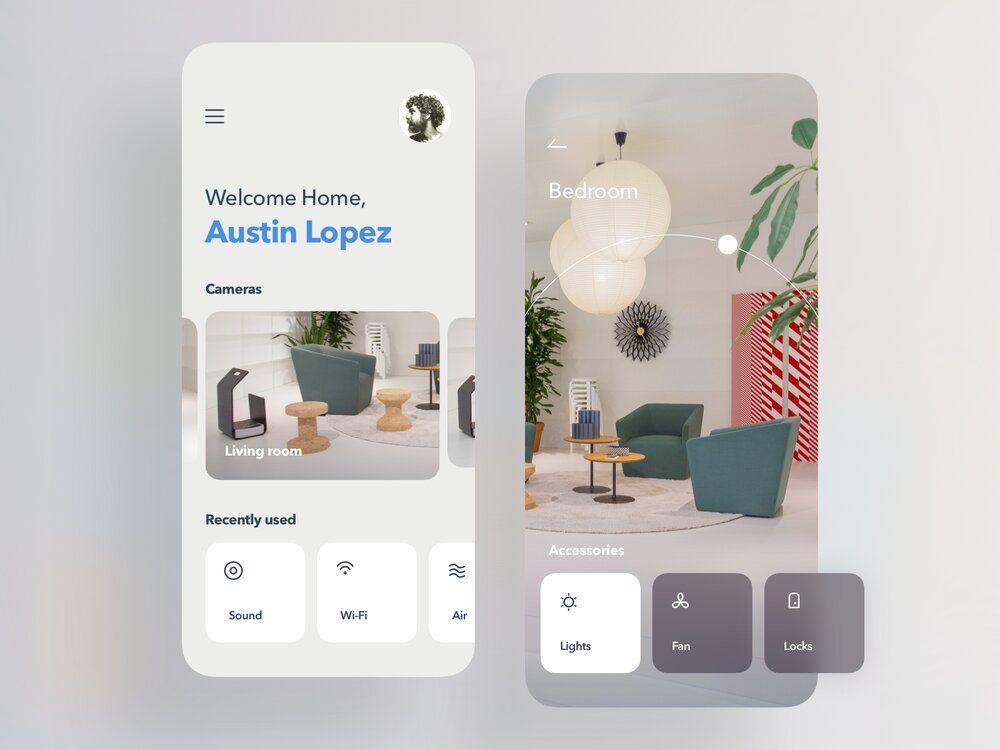
An important part as you develop IoT applications is building the Data Acquisition Module (image by Igor Savelev)
When working with this part, there are several aspects that we’d recommend taking into account:
- Signals that will be measured. It’s essential to decide what sensors and devices for measurement you’ll need.
- The number of sensors.
- The speed needed for the measurement of physical signals — indicators such as sample rate.
- The needed measurement accuracy — indicators such as sensor resolution.
Once you have answers to these questions, you’ll be able to determine the requirements for this module (in particular, your use case).
# 2: Data Processing Module
This part of devices serves several goals:
- Data processing.
- Analytics.
- Data storing & other computing operations.
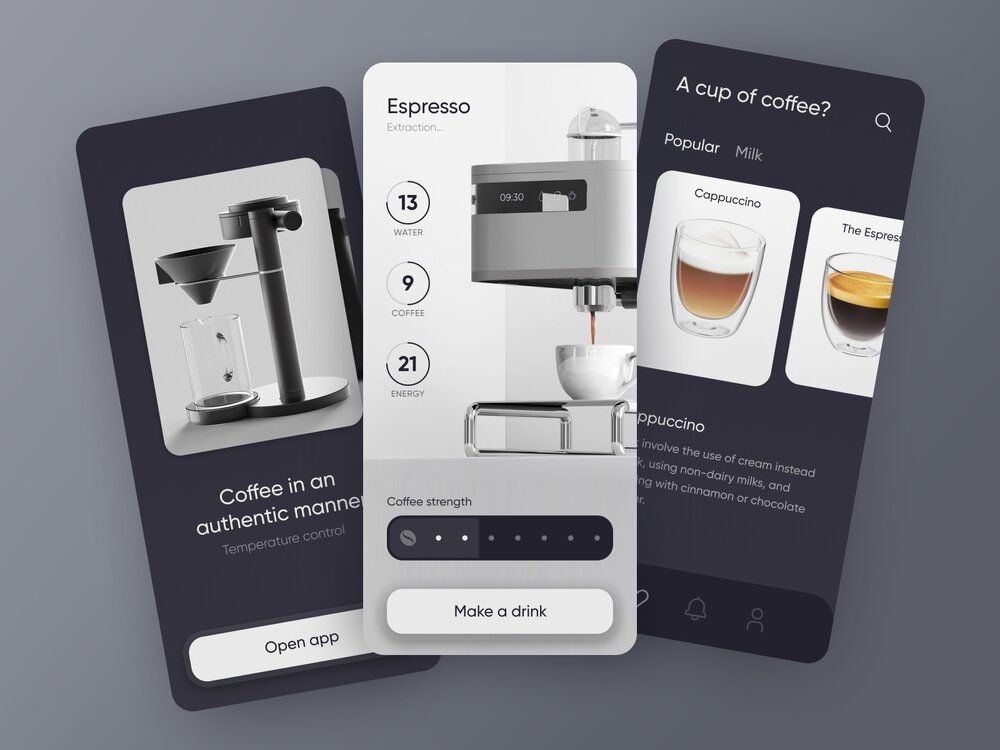
Data Processing Module is an important part of IoT app development for any type of IoT devices (from smart homes to medical IoT systems)(image by Stas Koval)
Your role here is to understand & explain the end goal of the development of the Internet of Things so you can guide your development and engineering teams.
Here, the key points might be:
- The amount of data that’ll be processed. This indicator will depend on the number of sensors, whether you’ll need real-time control and analytics, how much space you’ll want to leave for future updates, any size constraints, etc.
- The amount of data you’ll need to store locally. So, the data you’ll obtain will be either sent to the Cloud (or any external storage) or stored locally. Thus, you’ll need to decide how much data you’ll need to store temporarily to do all the necessary calculations or for buffering purposes in case your cloud connection crashes. Besides, don’t forget to consider whether or not you’ll need your “thing” to work offline, and if yes, for how long as that will define the capacity of the local storage.
At first, it may not seem that significant but eventually, these two indicators will have quite a big impact on your development costs, size of the “thing,” number & complexity of features, etc.
# 3: Communications Module
This part of the hardware is intended to enable communication between your external storage and any third-party integrations/devices.
It can be set up by using communication ports such as USBs and wireless protocols (we’ll talk about that in the next subsection).
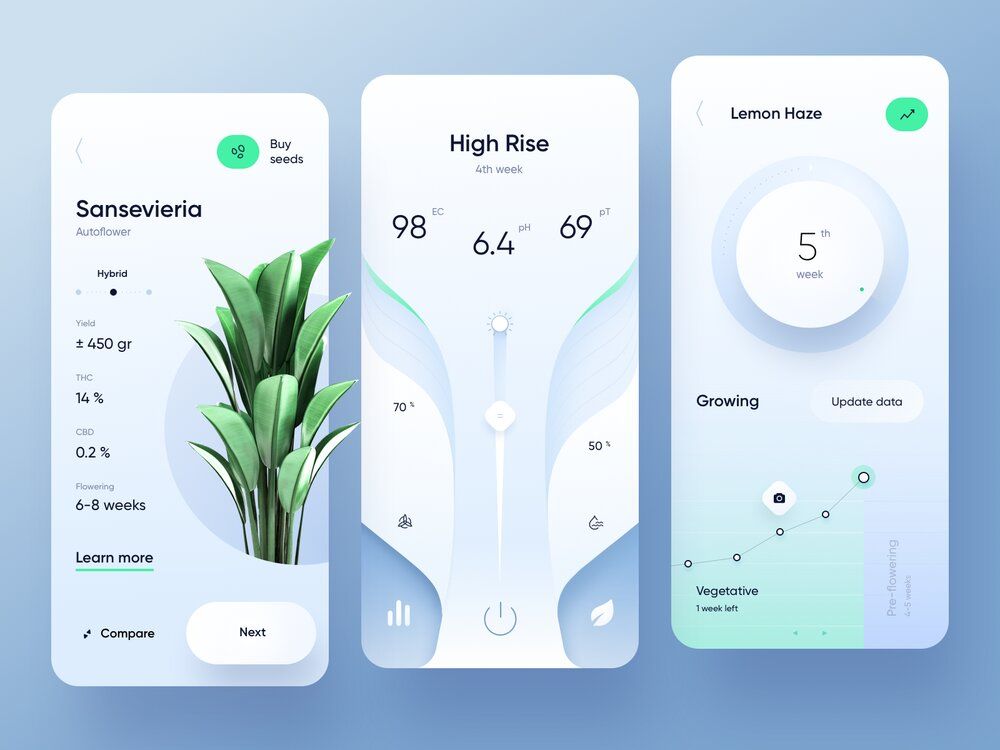
Example of Internet of things applications for plant watering and smart homes (image by Sèrgi Mi)
Your device can be either integrated with other parts of the hardware or be a separate device. The second option is called the gateway architecture and it might be more cost-efficient since you can only place one gateway for an area that will collect data from all sensors and send it to the storage.
#4: Testing with real devices or prototypes
In the process of building an IoT application, testing with real devices or IoT prototypes isn't just a step in the development process. It's a rigorous validation of your IoT ecosystem's readiness for the real world. This phase is where the digital meets the physical, and your concepts are put to the test — literally. What IoT application developers need to pay attention to:
1. Device Robustness: Devices should be tested for their functionality, durability, and response under various environmental conditions. This includes stress testing and scenario-based testing to simulate real-world use cases.
2. Network Reliability: Network testing is crucial, especially for devices that will be deployed across diverse locations. This ensures consistent connectivity and performance, regardless of the network conditions.
3. Application Interaction: The application layer requires thorough testing to ensure seamless interaction with the IoT devices. This includes testing the user interface, data processing capabilities, and integration with other systems.
4. Security Assurance: Security testing is paramount. Conduct vulnerability assessments and penetration tests to uncover any potential security issues that could compromise the integrity of the IoT ecosystem.
🤔 How to Choose the Right IoT Connectivity Option?
When developing software for your IoT device, it is essential to enable data exchange among various layers and components of the infrastructure, including 'things,' gateways, sensors, servers, and end-user solutions.
This communication is possible because of the so-called IoT protocols which can be considered as the language that machines use for data transmission.

IoT software solutions can be connected with cloud platforms and IoT devices with various protocols (image by Ramotion)
There are quite a few of them, so when choosing one protocol for your IoT solution, there are a number of factors that should be taken into account. For instance, bandwidth, connectivity range, power consumption, price, industry, and many others.
For you to better understand what all these protocols are about, we’ve decided to make a table with the main characteristics of each protocol:
Protocol | Description | |||
|---|---|---|---|---|
Wi-Fi | 10- to 100-meter connectivity range, affordable & widely-used. | |||
Bluetooth | There are options with 1, 10, and 100 meters of connectivity range; high data exchange speed & decent security level, low costs | |||
LPWAN | A large range of up to 40 kilometers (or even more); data transferring speed and energy consumption are low, widely used in agriculture, urban development, transporting, etc. | |||
Ethernet | Controls the transferring of data via the Local Area Network (LAN), must be physically connected to the devices by using cables; high speed of data down- & uploading | |||
RFID | Consists of readers, tags and applications; is enabled by attaching tags to objects, doesn’t require line-of-site so many signals can be read remotely from different places | |||
Cellular | The widest bandwidth among all protocols, high energy consumption, may not be a good option for remote use of battery-powered networks | |||
ZigBee & Other Mesh Protocols | Low current and intermediate power consumption; 100-meter connectivity range; simple in use, resistant to unauthorized readings and data exchange errors, scalable, with a big number of nodes possible to place | |||
MQTT | For battery-powered devices; low energy consumption, easy-to-use, operation over wireless networks, minimum bandwidth use | |||
DDS | Designed for real-time M2M communication, scalable & fast data exchange. | |||
XMPP | Best for consumer-oriented IoT, scalable. | |||
AMQP | Great for queueing, message orientation, routing (point-to-point as well as publish-and-subscribe); a decent level of security; robust communication model. | |||
LwM2M | Designed for resource-constrained devices specifically, great for device management and telemetry | |||
It's essential to match the protocol with the application's specific needs, taking into account the environment in which the devices will operate and the nature of the data they will transmit. Factors such as range, bandwidth, power consumption, and specific industry requirements must be carefully considered.
In Internet of Things application development, choosing the right IoT protocol is crucial for your project's success. Don't leave it to chance. Discuss your needs with our specialists who understand the nuances of IoT connectivity. Get in Touch and we'll help you select the ideal option!
🕳️ Potential Pitfalls & How to Avoid Them
When an IoT development company is creating an application for your IoT device, it is crucial to be aware of possible nuances that can negatively impact costs, user experience quality, or development speed if not properly addressed.
So, let’s briefly review the main pitfalls that can await you during development.
# 1: Firmware
As we have already discussed, firmware enables the communication between different parts of your hardware.
What’s important here is that the development speed directly depends on whether or not your firmware is ready-to-use.

An Internet of Things (IoT) app needs to communicate with other connected Internet of Things parts (image by Simona Vorlova)
In case it is ready, the only thing at this stage of the development that can slow down the process is bugs that can normally be solved fairly quickly.
However, If the firmware is at the early stages of development, the process can become markedly slower because it might be complicated to control the Internet of Things development processes (application and firmware), test them, fix bugs, etc. all at the same time.
So, we highly recommend you to consider looking for devices with already developed and tested firmware before you start the Internet of Things app development.
# 2: Security
One of the major problems of the IoT industry, particularly in sensitive sectors like IoT in healthcare, which includes the development of apps to track mental health, is security since there are not enough standards that developers/engineers would have to follow to make the system 100% reliable.
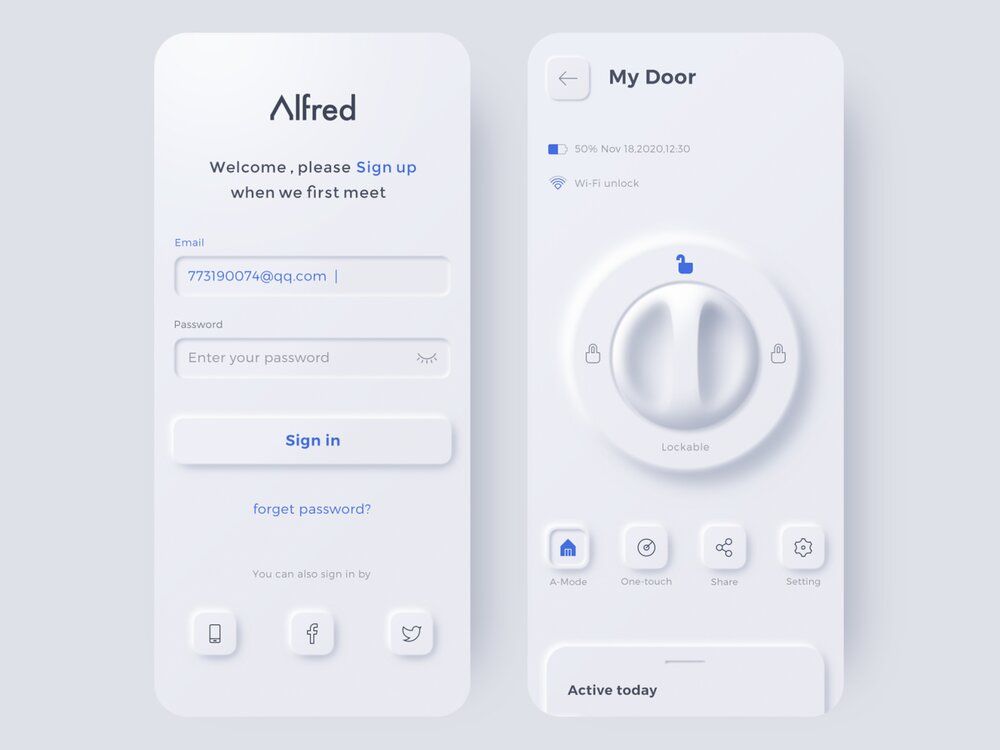
Internet of Things (IoT) app or software needs to be secure which is quite complicated since the IoT industry isn’t standardized (image by Xiaoming Phan)
Besides, the number of devices such as sensors is high in most IoT solutions which makes them more vulnerable and easier for hackers to spot a breach in.
To increase security, think about doing the following:
- “Security by design.” It’s a system that allows to prevent rather than fix any breaches in an IoT security system with the help of regular testing, authentication safeguards and the best cybersecurity practices.
- Regular updates. Through trial and error, you can figure out the best ways to make the device as secure as possible, so we recommend making updates as soon as you have something to improve in your security system.
- Use great security protocols such as HTTPS and TLS (transport layer security).
- Multi-factor authentication. It can include biometric authentication (fingerprinting, face and voice scanning, etc.), end-to-end encryption (full encryption which implies that only the sender and the recipient can read whatever it is), personal questions, email/phone number confirmation, complex password that’s changed every once in a while, etc.
# 3: Inconsistency
If your app is intended to allow users to control several devices within one app, you might face the problem of your app being inconsistent with certain devices from other brands.
For example, if a user buys your smart toaster but then opts for a fridge from another company, you can’t guarantee that they’ll be able to control both of these devices in your app which can damage your services’ quality and reputation.
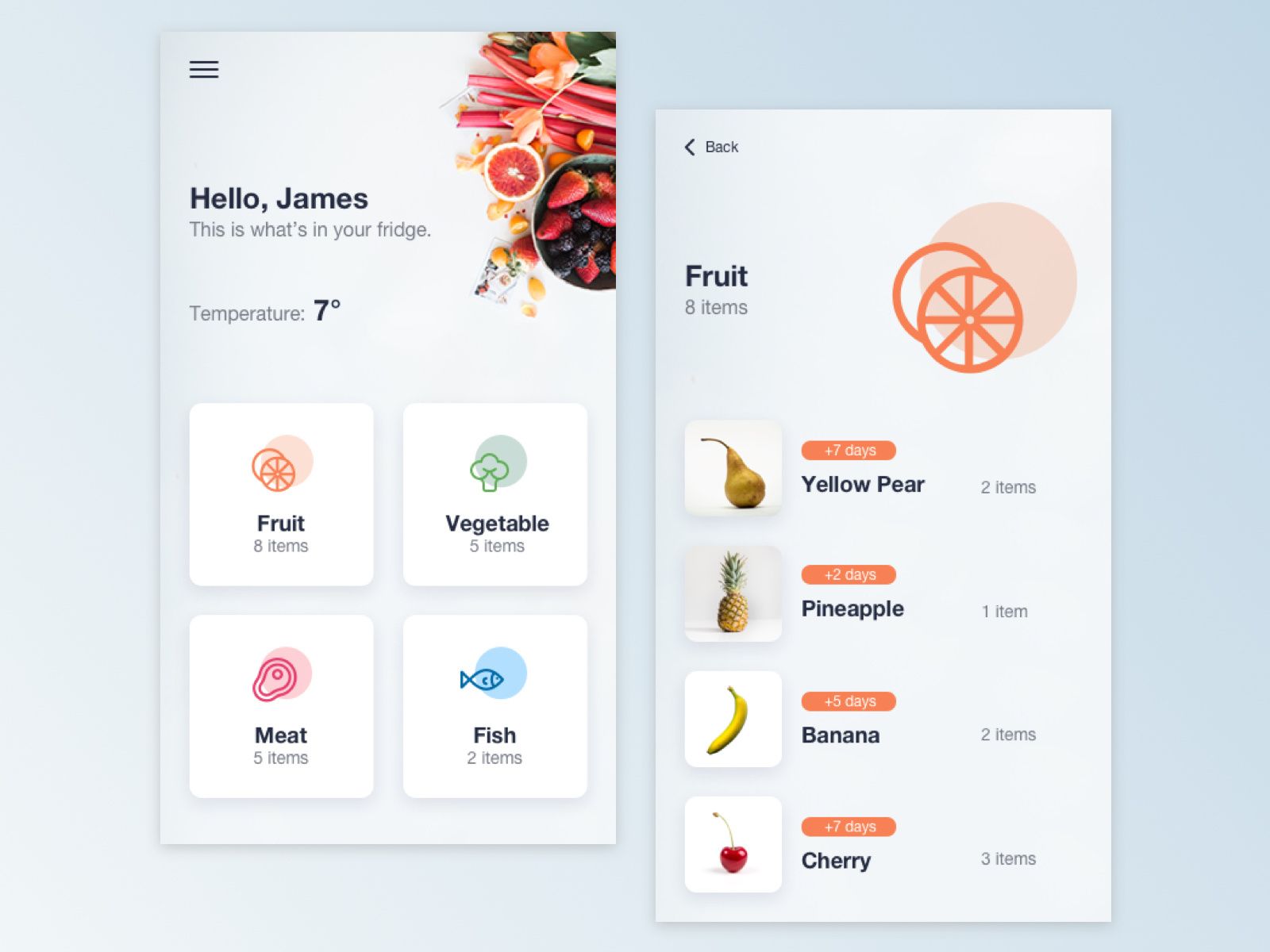
During IoT app development, take the fact that your mobile app should be consistent with IoT devices (image by Luca Volino)
All of that is because the standardization isn’t unified, and all companies use different APIs, protocols, and security features.
The most tricky part is that you can’t really do anything about it; a possible solution might be to allow integrating third-party services through their APIs, but that will depend on your specific use case.
# 4: Recovery Mode
It might be a good idea to add a so-called “recovery mode” into your IoT application in case users need to restore lost data from a cloud or another storage.
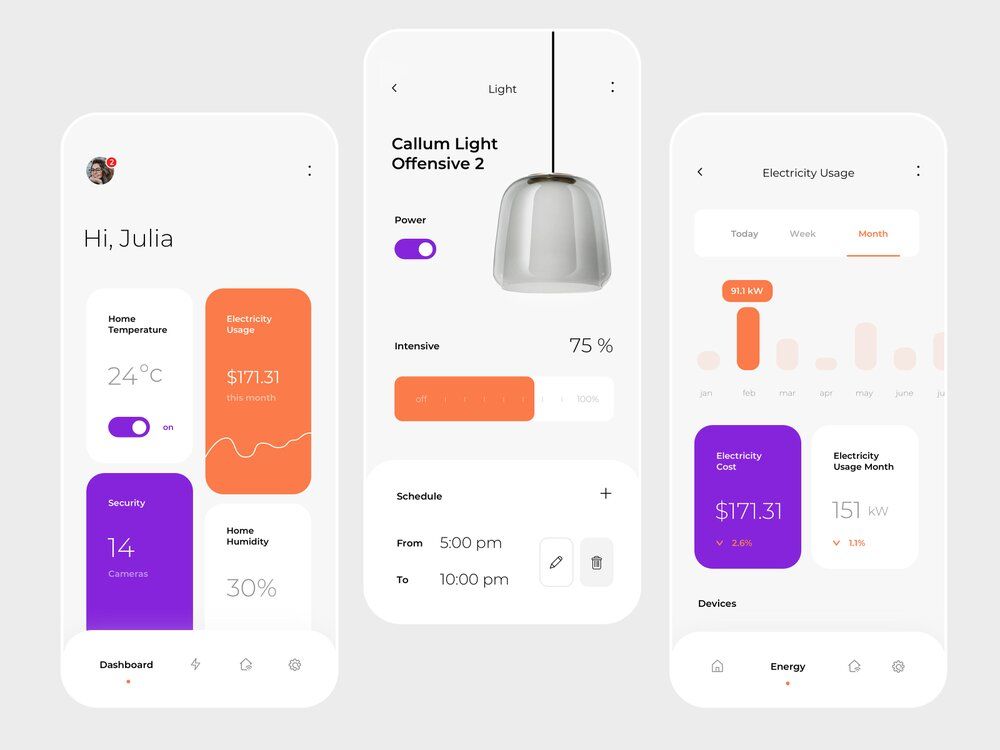
You can build in a recovery mode into apps for the Internet of Things (image by Patryk Polak)
This feature is something that should be implemented before developing an app since to implement it you need to allow access to the device's bootloader which is a lot easier to do when manufacturing the “thing” itself.
# 5: Quality Assurance
Each & every update of the IoT firmware, especially when you build a smart home app, should be tested to check how it affects the application (processes like fixing bugs, testing the app’s behavior, checking if a cloud or another storage is synchronized well enough with the system, etc.).
However, the most important part to keep in mind here is that such quality tests can’t be performed well enough as simulations meaning that your development team might need to run them manually or with real devices (if possible) so that your services are as “seamless” as possible.
# 6: Issues and disruptions while connecting software and devices.
When developing Internet of Things (IoT) applications, a task often facilitated by mobile app development services, connecting software and devices presents a unique set of challenges. Here are some critical issues and disruptions that developers and users may face:
1. Hardware Compatibility
Choosing the right hardware goes beyond basic compatibility; it involves ensuring that the devices can operate under specific environmental conditions and can be easily updated or replaced as technology evolves. For instance, sensors used in outdoor applications must be robust enough to handle weather variations.
2. Network Reliability
The choice of network protocol can also impact the energy efficiency of IoT devices. For example, protocols like Zigbee or Z-Wave are often preferred in smart home applications due to their low power consumption and mesh networking capabilities, which provide greater coverage and reliability.
3. Data Management
For internet of things application developers, effective data management also includes the ability to process and analyze data at the edge of the network. This edge computing approach can minimize latency and bandwidth use, leading to more responsive IoT applications.
4. Security Threats
Security measures must be proactive and include end-to-end encryption, regular firmware updates, and secure boot processes. The integration of AI and machine learning can also play a role in detecting and responding to security threats in real-time.
5. Scalability Concerns
Scalability is not just a technical challenge but also a business consideration. As the number of devices grows, the cost implications of data storage and processing become significant. Planning for scalability must include a cost-effective strategy for data management.
6. Technological Inconsistency
To address inconsistencies, developers are encouraged to use standardized APIs and protocols that ensure different devices and systems can communicate effectively. Adopting industry standards can also facilitate easier integration and interoperability.
7. Software Complexity
The complexity of IoT software is often managed through modular design, allowing different functionalities to be developed and tested independently. This approach can also make it easier to update and maintain the software over time.
8. Cloud Dependencies
The strategy of diversifying cloud services in IoT projects points to the broader skill set required, including how to develop IoT applications that are versatile in cloud environments. Moreover, using local processing for critical operations can ensure functionality even when cloud services are unavailable.
9. Interoperability Issues
Standards like MQTT and CoAP are designed to enable interoperability in IoT. Adopting such standards can help ensure that different devices and systems can work together seamlessly, regardless of the manufacturer.
10. Regulatory Compliance
Compliance is not static; as technology and regulations evolve, IoT systems must adapt. This means implementing a compliance strategy that can accommodate changes over time, such as the introduction of new privacy laws or industry-specific regulations.
Successful IoT application development requires careful consideration of potential pitfalls, including firmware readiness, security challenges, device consistency, recovery options, and rigorous quality assurance. To avoid costly and time-consuming setbacks, developers should prioritize using tested firmware, implementing robust security measures, ensuring interoperability, incorporating recovery modes from the outset, and conducting thorough, real-world testing.
Encountering challenges in IoT development? Our team at Stormotion is here to navigate you through the complexities. Connect with us for an in-depth consultation and ensure your IoT project is on the path to success.
☁️ Platforms to Use for IoT Development
So that the IoT development is a little easier, there are various platforms on the market that you can use: ready-to-use sets of features and tools. Their functionalities cover various needs such as connectivity, data flow, app functionality, etc.

You can build IoT applications by using a platform (it can be cloud-based as well) (image by Quan)
Let’s take a closer look at what services an IoT platform can provide:
- Hardware connection, e. g., between a “thing” & sensors.
- Implementing and managing protocols.
- Adding authentication and security features.
- Analyzing, gathering and providing infographics of the data from “things.”
- Connecting current systems with different parts of the hardware.
To navigate you through the market of IoT platforms, we’ve decided to make a list of the most widely-used & trustworthy platform providers with a variety of services. Here you go:
- IBM Watson.
- Azure IoT (from Microsoft).
- Google Cloud IoT.
- AWS IoT (from Amazon).
- Salesforce IoT.
- Zetta.
- Kaa.
- Arduino IoT Cloud.
- Carriots (or Altair).
In fact, there’s no specific case when we could tell you that you should most likely use an IoT platform or a specific type of it (like a cloud-based one) since it really depends on your personal preference.
Thus, by using such a platform, you can speed up the development process and reduce the up-front costs. However, in the long run, it might be less beneficial since the fees are usually subscription- or use-based which means they can increase in the future.
While these platforms can offer cost savings and efficiency in the short term, it's important to consider the potential for rising expenses over time due to subscription or usage-based fees. Ultimately, the choice of platform should align with specific project requirements and long-term strategic goals, balancing immediate benefits with future financial implications.
⚙️ Top Functionality of an IoT Software
In this section, we’ll review the main components of IoT software (which can be developed as a mobile app, website, dashboard, etc.) services that a user might need.
However, we’d like to draw your attention not to the feature itself but to certain nuances and not-so-obvious aspects that there may be.
# 1: Data Collection 📥
The backend of your software is responsible for data collection and, in fact, there are multiple ways of how you can organize it, which can save you energy, resources, and money if chosen correctly.
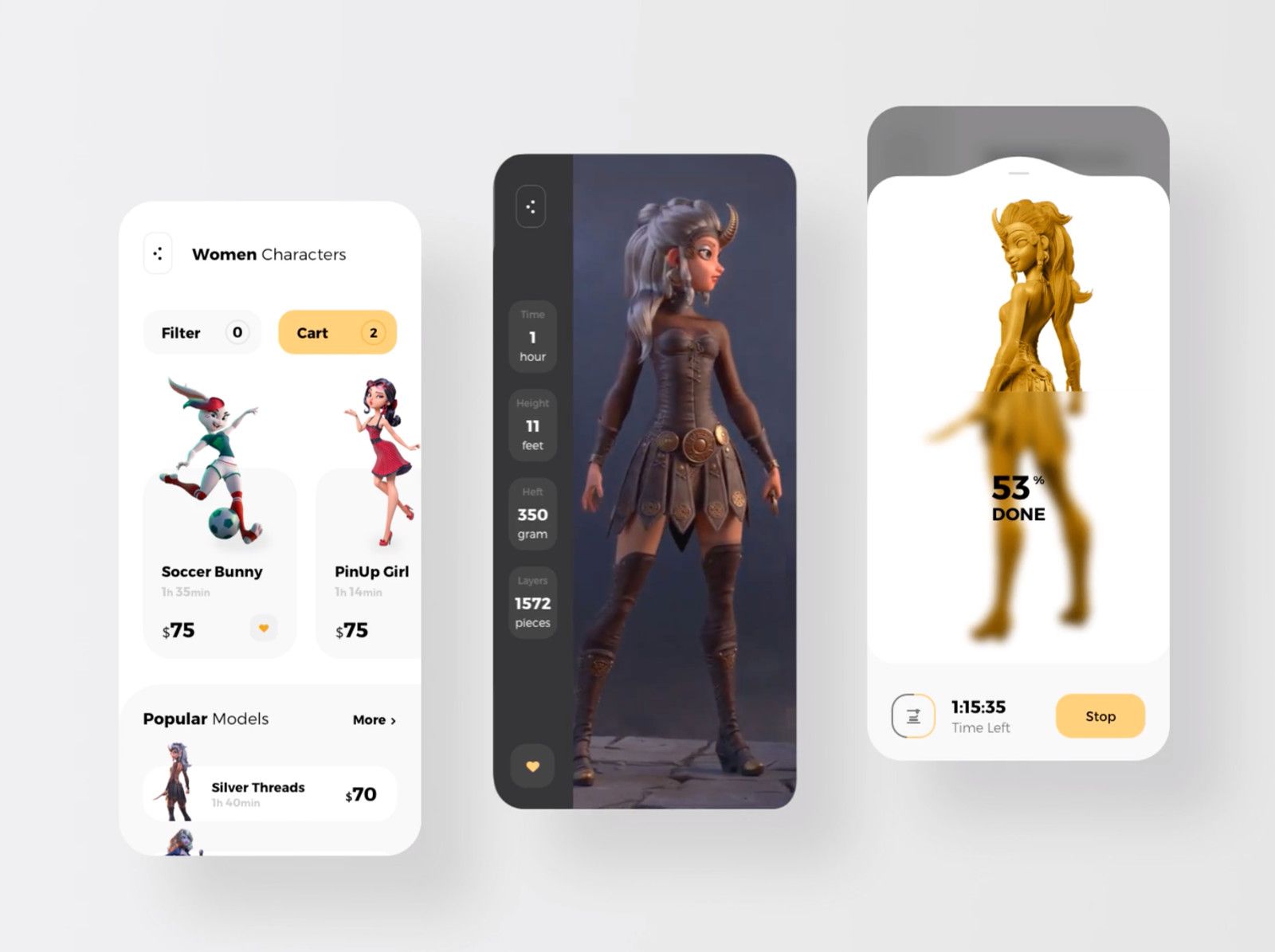
It’s important to build a well-functioning data collection system during your IoT app development (image by Kate R.)
So, your data collection strategy can depend and be based on the following factors:
1. Frequency & Accuracy. Basically, this way, you correlate the desired accuracy of the data with the frequency of collection needed to reach it. It can happen that a certain level of accuracy will be sufficient and thus a higher level will not be providing any additional value. So, you will be able to reduce the measurement frequency which will save you resources used for data collection while still allowing option accuracy level.
2. Time. In case there’s a specific period of time after which the data won’t be considered fresh and relevant anymore, you can set a “maximum time gap” between the last and the next measurement. This way, your data collection will be performed with an interval fully tailored to your use case.
3. Energy. In fact, this one is similar to the frequency example. However, here, the key factor is energy consumption, meaning that a certain accuracy & amount of data is sufficient and the energy consumption can be minimized to as little as it’s enough to reach the goal.
4. Privacy. If you need to only measure a certain amount of data without going any deeper even by accident, you can add the so-called “noise” to the measurement process. It’ll interfere with the process once the needed level of data accuracy is reached, allowing you to still be compliant with all the necessary regulations & respect privacy.
# 2: Data Processing 🔄
Data processing is quite demanding in terms of resources, meaning that you should be attentive when deciding what to process and what not to process.
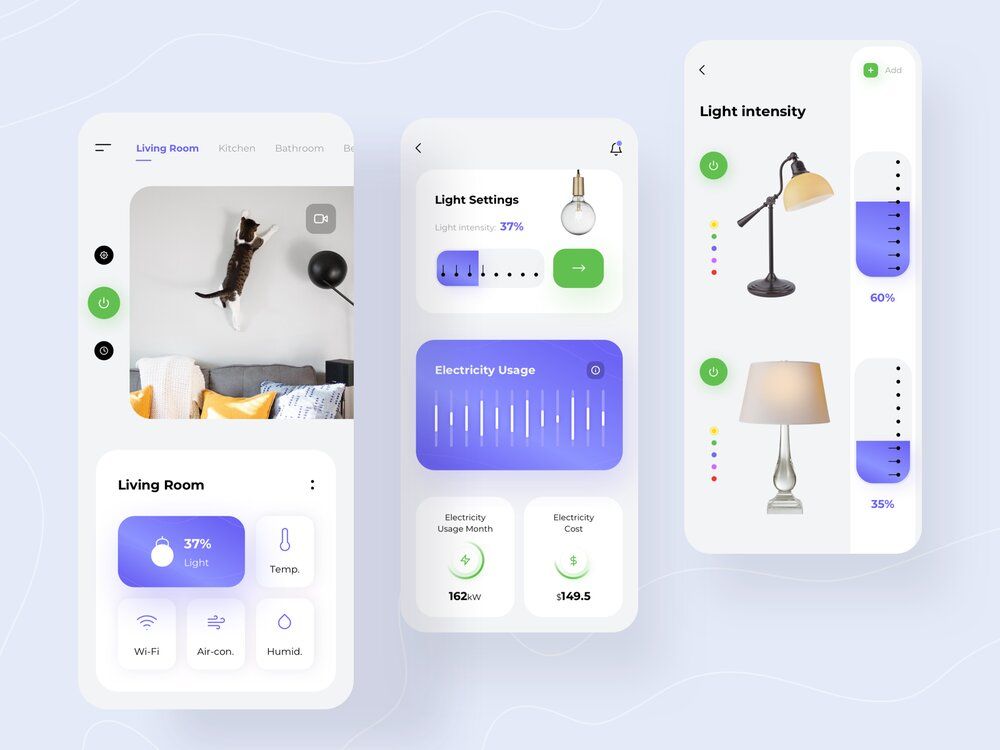
Dashboard & mobile apps for the Internet of Things should be able to give user data in real-time (image by Nadya Lazurenko)
First and foremost, you should pay attention to how much data you need to analyze to keep your system functioning. After that, try to limit it to this amount of data so the process is cost-, energy-, and time-efficient. Besides, you’ll need additional tools for handling the data which will of course create additional costs.
If you use third-party processing solutions, make sure to properly look into their statistics and your service agreement (which is often neglected). Something you might want to look for is how often the system is exposed to breaches, what the terms of changing the vendor are, etc.
Additionally, it might be a good idea to allow real-time data processing since it can be essential for industries such as agriculture, healthcare, weather forecasting, or even smart door locks.
3: Data Storage 📚
Normally, IoT devices don’t have much storage which makes it essential for most use cases to use external storage.
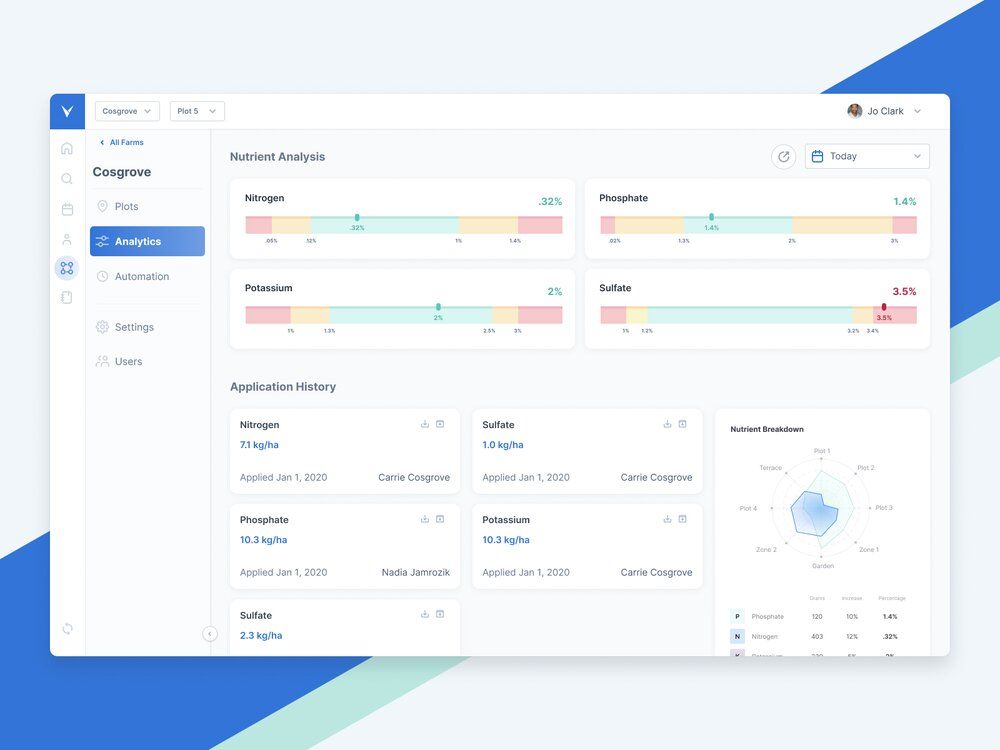
IoT application can store data on a cloud-based platform or another storage (image by Hannah White)
So when picking storage, you should pay attention to its ability to quickly retrieve the data for any needs. Besides, it might be a good idea to use one that allows searching data by timestamps and other filters so you can easily find what you need.
Furthermore, it may be smart to make the data exportable and moveable to various formats to see the different highlights for comparison & analysis.
# 4: Data Analytics 📊
Data analytics is a crucial activity that IoT solutions perform to be able to function & provide value for end-users. Its core function is to separate the chunks of data that come in every day while “things” are functioning and extract the necessary information from it so it can be transferred to a user.
Basically, this process has to be gone through before actually visualizing it for customers so that instead of having to look at raw data they’ll be able to look at something valuable to track dynamics, have clear conclusions, and make data-driven decisions.
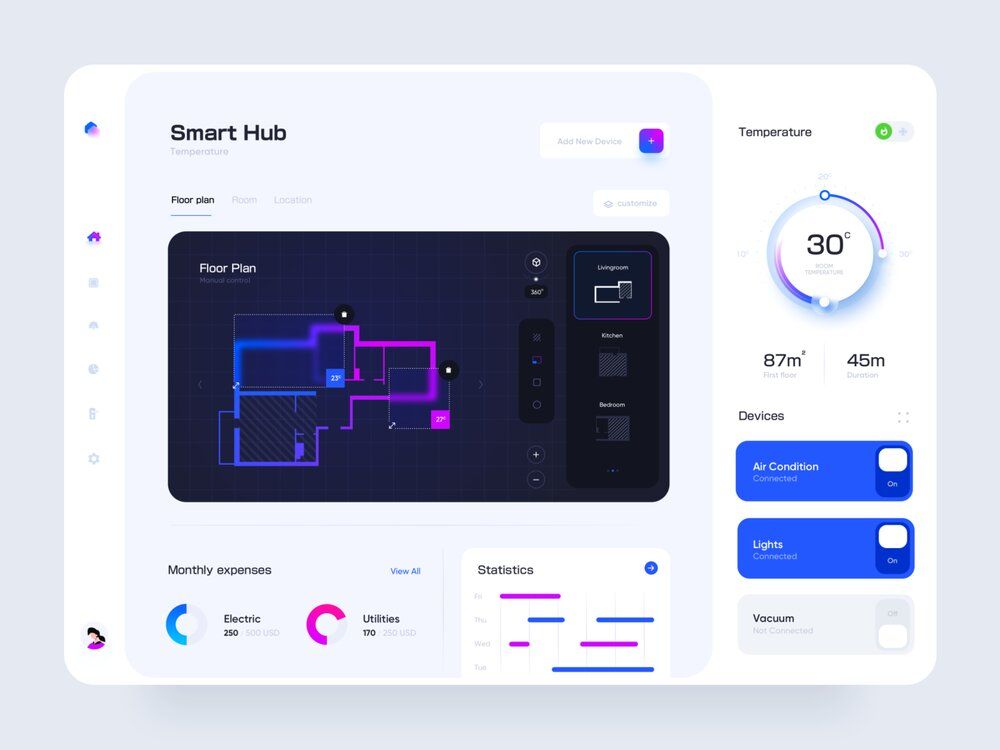
You can develop an IoT technology that enables analytical services (image by Ariuka)
It’s essential to offer real-time data analysis so users can take immediate action when needed (depending on each specific use case). Additionally, data analytics can:
- Be performed over a given period of time so users can observe the general tendency and trends.
- Offer conclusions and steps needed to be taken based on the analysis.
- Help make marketing campaigns more personalized and targeted, etc.
# 5: Data Visualization 📈
To present the analyzed data to end-users, you’ll need certain tools for visualization. Most often, this function implies:
- The visualization itself (Real-time table, sensor overview, charts & tables, etc.).
- History so users can access previous data visuals.
- Notifications to make sure that users know when something new comes up.
- Alerts — something that requires immediate attention and/or action.

Example of a dashboard to take into account to develop IoT apps (image by Anton Mikhaltsov 👨🏻🎨)
We’d like to pay special attention to alerts. Here, it’s of high importance to develop the habit of instantly paying attention to urgent situations and reacting accordingly; you can definitely help your users with that.
Think about adding special sound effects when alerts come up or marking them with a flashy icon so they stand out among all the other ones.
Also, it might be a good idea to categorize the visualized data. To be more specific, don’t offer too many graphs that represent the same data with different variables. Instead, consider making it manageable for users to choose what variable is presented for them.
Take smart sprinkles as an example. Instead of showing humidity on each field with a separate chart, add a tab where users can choose what field they want to be presented.
# 6: Device Management 💻
You’ll most likely need to add different features for users to control the “thing” along with its components. That may include:
- Provisioning (adding a device to the system) and Authentication.
- Configuration and Control (turn on/off, change modes, etc.). It’s important to take even more control of the device’s components (like frequency of data measurements, data transferring to the cloud, etc.).
- Monitoring and Diagnostics. This feature is intended to display all processes, warn if something is off, and regularly diagnose to see if there are any breakdowns.
- Software Maintenance and Updates. This can help you & your users fix everything remotely (if possible).

IoT mobile devices can be controlled with IoT apps or other solutions (image by 7ahang)
Additionally, you can implement a feature for grouping parts of the device like sensors. It might be a good idea to add a hierarchy of groups. For instance, sensors are located in one device, and devices are grouped as a fleet.
Also, think about adding an extended searching feature to your device management functionality. It can include searching by:
- Device ID.
- Device state (on/off, working/broken, etc.).
- Device type (if you have several) & others.
This searching feature is more suitable for broader “things,” e.g., for hospitals, however, it’s applicable to devices of any type & scale. It all depends on your use case.
The effectiveness of IoT software hinges on a nuanced approach to its core functionalities: data collection, processing, storage, analytics, visualization, and device management. By fine-tuning these components — considering factors like frequency, accuracy, timeliness, energy consumption, and privacy in data collection; efficiency and security in data processing; quick retrieval and flexibility in data storage; insightful real-time analysis; clear, categorized visualization with actionable alerts; and comprehensive device management with robust search capabilities—we can create IoT systems that are not only resource-efficient but also user-friendly and responsive to the dynamic needs of various industries.
🤖 How to Integrate an IoT with Third-Party Devices like Google Home & Alexa?
When such virtual AI (artificial intelligence) assistants entered the market, it became truly disrupted. Nevertheless, the good news is that you can integrate your IoT device with them to provide additional value to your users.

Example of artificial intelligence assistant systems to integrate with mobile devices or other solutions (image by Patricia Reiners)
Naturally, each assistant’s developer and provider that makes their device integrable offers an API just for this purpose. Any voice-controlled command is enabled by “skills” and “action” in Amazon Alexa and Google Home respectively. These commands need to be implemented into a server which will then “perform” them as it’s required for integration.
For Google Home, you can use any server but Alexa’s “skills” must be executed on the AWS Lambda server.
After this step is done, you’ll need to ensure security & privacy policy compliance, which is also partially dictated by providers. For “skills” and “actions” to actually work, you and/or your development team need to send them to providers for approval. The process might take up to a week.
Surely, there are many ready-to-use commands that are already available, so it might be a good idea to educate yourself on them. In case you find that everything you need is already there, you’ll be able to skip this step.
Integrating IoT devices with AI assistants like Google Home and Amazon Alexa can enhance user experience by enabling voice-controlled functionality. To achieve this, developers must utilize the provided APIs to create compatible "skills" for Alexa or "actions" for Google Home, host these on the appropriate servers (AWS Lambda for Alexa), and navigate the approval process with attention to security and privacy compliance. While this process may take some time, the potential to tap into existing commands can streamline integration.
📋 12 Steps to Create IoT Applications
The development of IoT applications is a complex process that involves several steps and considerations.
🎯Step 1: Define Your Objective and Scope
Before diving into the technicalities, it's crucial to define what you want your IoT application to achieve. Whether it's smart home automation, healthcare monitoring, or industrial asset tracking, having a clear goal will guide your development process. Each sector presents its own set of challenges and opportunities, and understanding these can significantly influence the direction and success of your IoT solution.
🔩Step 2: Choose the Right Hardware
IoT devices vary from simple sensors to complex industrial machines. Select hardware that is energy-efficient, has the necessary sensors, and supports wireless communication. The choice of hardware will significantly influence your application's capabilities.
Platforms like Arduino for prototyping and Raspberry Pi for more complex tasks can be excellent starting points. For industrial-grade hardware, Siemens IoT offers robust options. You can read more about how to choose hardware a little higher in the article.
🔒Step 3: Establish Secure Data Collection
Data is at the heart of IoT. Ensure that your application can collect data securely by implementing robust encryption and protecting the integrity of the device settings. This step is crucial to prevent data breaches and ensure user trust.
Utilize platforms like Telit, which offers modules, platforms, and services for secure data collection, ensuring end-to-end IoT security.
🌐Step 4: Organize High-Performance Data Streaming
IoT devices can generate massive amounts of data. Your application must be able to handle this data efficiently. This could involve using non-traditional data streaming mechanisms that are optimized for IoT workloads.
☁️Step 5: Create a Centralized Data Storage Solution
Most IoT applications require a centralized system for data storage and analysis. Cloud solutions are often ideal for this purpose, providing scalable and efficient data handling capabilities.
Amazon Web Services (AWS) provides scalable cloud storage solutions like Amazon S3 and DynamoDB, which are ideal for handling large IoT datasets.
⚙️Step 6: Develop a Scalable Backend
The server-side of your IoT application should be able to sort, process, and analyze the data. Utilize IoT development platforms that offer extensive functionality for creating a scalable and intelligent backend.
Microsoft Azure IoT Suite or Google Cloud IoT offer powerful backend services that can scale as your application grows.
🖌️Step 7: Design an Intuitive Front-End
The user interface of your IoT application should be user-friendly and provide valuable insights from the processed data. Modern IoT platforms allow developers to create sophisticated front-ends that enhance user experience.
🛠️Step 8: Utilize IoT Development Platforms
Several platforms can accelerate IoT app development. Some of the popular ones include:
Azure IoT Suite: Offers a comprehensive set of tools for integrating devices and managing data.
Amazon Web Services (AWS): Provides a robust infrastructure with enhanced security and flexibility.
IBM Watson: Supports AI-driven analysis and secure device-server communication.
Oracle IoT: Known for its cloud solutions and a wide range of features for IoT development.
KAA IoT: An open-source platform that offers a rich toolkit for IoT app development.
🚀Step 9: Consider the Fastest-Growing IoT Areas
When developing your application, consider focusing on rapidly growing IoT areas such as smart homes, retail, healthcare, logistics, and manufacturing. These sectors are ripe with opportunities for innovative IoT solutions.
🔬Step 10: Test and Iterate
After developing your IoT application, thorough testing is essential. This includes testing for functionality, security, and user experience. Based on feedback, iterate and improve your application.
For testing, use platforms like Mocha for JavaScript applications, and for device simulation, the Azure IoT Device Simulation tool can be very useful.
📦Step 11: Deployment and Maintenance
Deploy your application and ensure that you have a plan for ongoing maintenance. This includes updating the software, managing the devices, and continuously improving the application based on user feedback.
Docker and Kubernetes can help in deploying and maintaining your IoT applications, providing containerization and orchestration services.
📈Step 12: Scale Your Solution
As your IoT application gains traction, attracting more users and generating larger volumes of data, the need to scale your solution becomes imperative. This scaling process may encompass a spectrum of enhancements and upgrades.
Google Cloud's Bigtable offer robust and scalable solutions that can grow with your user base.
The creation of IoT applications is a multifaceted endeavor that demands a strategic approach, from defining clear objectives to deploying and scaling the final product.
💰 What Affects IoT Application Development Costs?
When planning out your IoT application development costs, it’s important to make sure that your budget is big enough, but while the exact numbers can’t be predicted since each case is unique, there are a couple of features that you and your development team might consider during your calculations.
That includes:
- Number & complexity of features.
- Scope of the device.
- Chosen technology.
- Costs of third-party services (if needed).
- Your developers’ hourly rate.
Generally, development costs might range from $22,000 to $70,000:
IoT Software Features Estimated in Hours
Using React Native
⚙️ Feature | ⏳ Min Hours | ⏱ Max Hours |
|---|---|---|
📲 Implementing BLE-Connection with Device | 120 | 180 |
📚 Collection | 24 | 60 |
🔄 Processing | 48 | 64 |
💼 Storing | 32 | 40 |
⚙️ Engineering | 40 | 60 |
📊 Visualization | 60 | 100 |
💻 IoT Multiple Device Management | 20 | 60 |
⏱ Total Hours | 344 | 564 |
💵 Approximate costs | $22,000 | $70,000 |
👨💻 Our Expertise in IoT App Development
We at Stormotion have leveraged our expertise in IoT to develop applications that enhance the interaction between users and their devices, ensuring a seamless and intuitive experience. Here's a look at how we approached and executed projects for Norsk, SportPlus, and Stepr.
For Norsk, we took on the challenge of transforming their existing application into a sophisticated companion app for their series of batteries. Our team developed and integrated a communication protocol that enabled Bluetooth Low Energy (BLE) connectivity between the batteries and the application. This protocol was crucial in allowing the app to monitor and manage the battery status, ensuring safety during open water, ice fishing, and kayaking activities.

Norsk Guardian
(image by Stormotion)
The Norsk Guardian app is designed to preemptively alert users to potential battery issues, preventing critical situations at sea. It provides real-time monitoring of battery temperature, voltage, and charge, among other parameters.

SportPlus
(image by Stormotion)
For SportPlus, we created a companion workout app that connects with their fitness devices. This project presented a unique challenge as we discovered the need to accommodate four different BLE protocols due to the inconsistency in the operation of the workout machines. To address this, we developed a generic protocol handler with BLE integration that ensured stable communication between the app and all the devices.
Additionally, we implemented a CMS system that allows the SportPlus team to manage and update workout content, providing added value to the users.
Also, we’ve worked with Stepr. In collaboration with them, we developed an Android-based tablet application that communicates with the fitness device through a Serial connection, granting users full control over the equipment. Our role included integrating a protocol from a Chinese partner and developing the application to facilitate the device's market launch.
💡 Takeaways
As you can see, the process of IoT app development has quite a few pitfalls, needs to be well thought out and in advance, and requires much technical knowledge.
However, the game is worth the candle since the market is relatively new, and most new “things” thrill the industry, allowing you to gain greater profits.
Keep in mind, your specific use case defines many things during the development. Surely, we can give you general advice and prevent you from making certain mistakes based on our experience. Eventually though, your preferences & needs will be the decisive factor in many cases.
If you need any help with the development or have any questions left, feel free to reach out to us. We’ll find a way to help you!
Was it helpful?
Questions you may have
Take a look at how we solve challenges to meet project requirements
What is an IoT application, and how does it work?
An IoT application is a software application that is part of the Internet of Things (IoT) ecosystem. It typically involves a network of physical objects ("things") embedded with sensors, software, and other technologies to connect and exchange data with other devices and systems over the internet. These applications enable the collection, exchange, and analysis of data, often facilitating automation and improved efficiency.
What programming languages are commonly used to develop IoT applications?
The programming languages used for IoT applications vary depending on the component being developed. For device-level programming, C and C++ are commonly used due to their efficiency and control over system resources. For higher-level IoT applications, languages like Java, Python, JavaScript, and Go are popular choices.
What type of devices can be integrated into an IoT application?
A wide range of devices can be integrated into an IoT application, including but not limited to sensors, actuators, smart appliances, wearable devices, medical devices, and industrial machinery.
How do I choose the right IoT platform for my application?
Choosing the right IoT platform involves considering factors such as the supported data and network protocols, cloud architecture flexibility, scalability, hardware support, security mechanisms, and the ability to integrate with other systems.
What are some common challenges when developing IoT applications?
Common challenges include ensuring interoperability among diverse devices and systems, managing the security and privacy of data, achieving scalability, and handling the complexity of developing and maintaining an ecosystem of interconnected devices.
How can I ensure my IoT application is secure?
To ensure security, implement strong user authentication, data encryption, access rights management, and comply with security standards like ISO27001, SOC2 Type 2, and IEC 62304 for healthcare-related apps. It's also important to use secure connections (HTTPS) and consider security from the start of the development process.
How can I test my IoT application?
Testing an IoT application involves various types of testing such as security, performance, usability, compatibility, and scalability testing. Specific IoT testing tools like Wireshark or mPulse can be used to facilitate this process.
What are some best practices for developing IoT applications?
Best practices include focusing on user experience, employing a multi-layered security approach, using third-party SDKs and APIs to speed up development, prioritizing back-end and API development, and incorporating automated testing throughout the development process.
How can I optimize the performance of my IoT application?
Performance optimization can be achieved by efficient use of resources at the device level, optimizing data transmission, using edge computing to process data closer to the source, and employing scalable cloud services.
What resources are available to help me develop my IoT application?
Resources for developing IoT applications include open-source platforms like Thinger.io, commercial IoT platforms like Kaa IoT Platform, and services offered by tech giants such as Amazon, Microsoft, and Google. Additionally, there are numerous development frameworks, libraries, and tools available to assist in the development process.
Read also
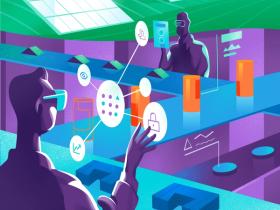
What is Prototyping in IoT and Some Practical Advice

What is IoT Monitoring?

What is IoT Device Management?
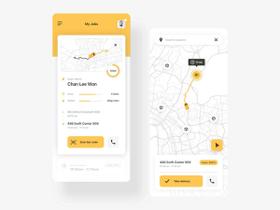
IoT in Logistics & Transportation

IoT in Healthcare: From Clinics to Mobile Apps
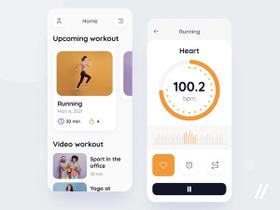
IoT in the Fitness Industry: Devices, Use Cases & Tips
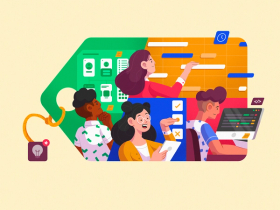
How Much Does It Cost to Develop an IoT Application: A Case Study-Based Roadmap
Our clients say
![Stormotion client Alexander Wolff, CPO from [object Object]](/static/a16ba3c9580effc3ab9a68d115eadffe/b0e74/alex.png)
When I was working with Stormotion, I forgot they were an external agency. They put such effort into my product it might as well have been their own. I’ve never worked with such a client-focused company before.
Alexander Wolff, CPO
Sjut
